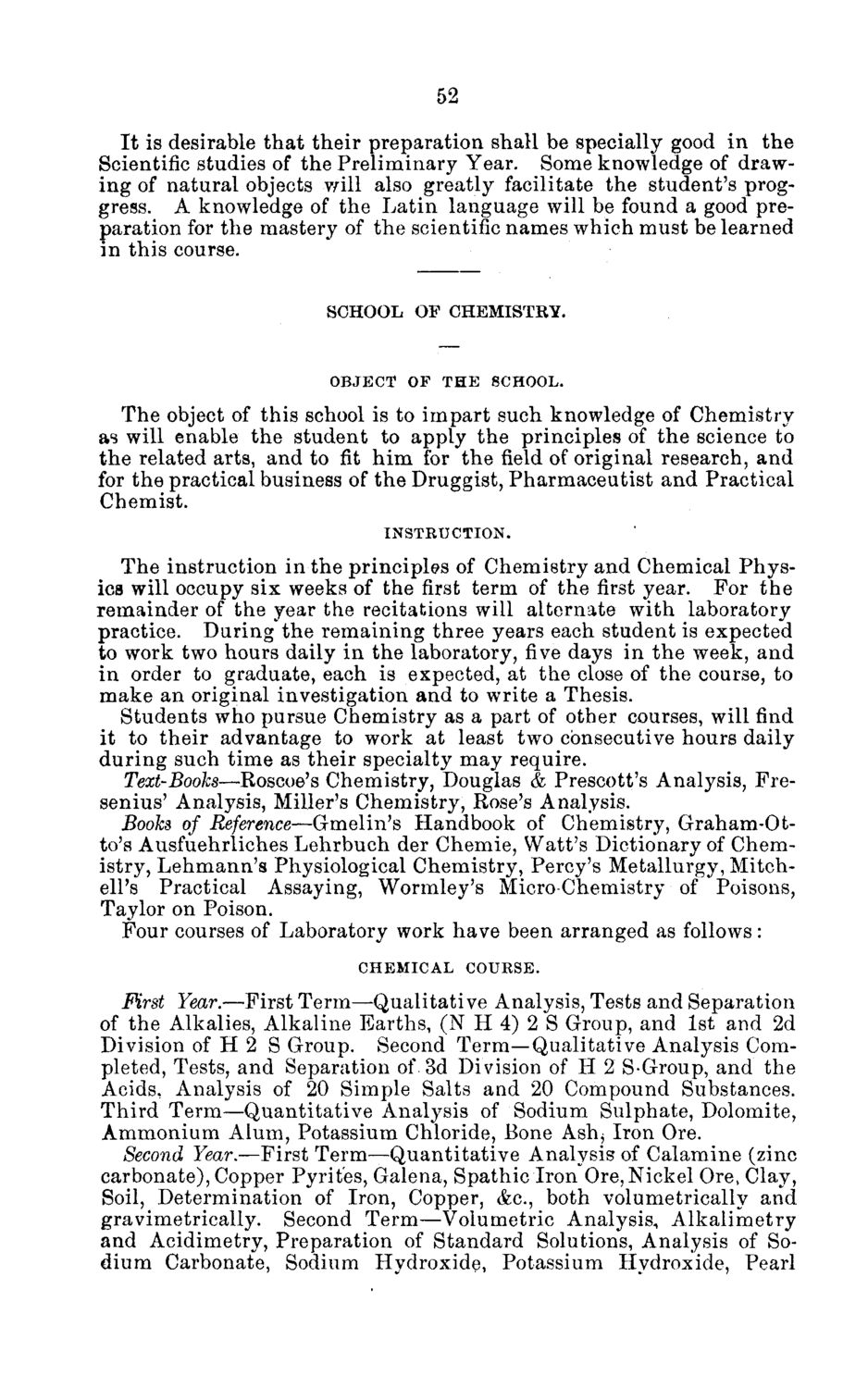| |
| |
Caption: Board of Trustees Minutes - 1876
This is a reduced-resolution page image for fast online browsing.

EXTRACTED TEXT FROM PAGE:
52 It is desirable that their preparation shall be specially good in the Scientific studies of the Preliminary Year. Some knowledge of drawing of natural objects will also greatly facilitate the student's proggress. A knowledge of the Latin language will be found a good preparation for the mastery of the scientific names which must be learned in this course. SCHOOL OF CHEMISTRY. OBJECT OF T H E SCHOOL. The object of this school is to impart such knowledge of Chemistry as will enable the student to apply the principles of the science to the related arts, and to fit him for the field of original research, and for the practical business of the Druggist, Pharmaceutist and Practical Chemist. INSTRUCTION. The instruction in the principles of Chemistry and Chemical Physics will occupy six weeks of the first term of the first year. For the remainder of the year the recitations will alternate with laboratory practice. During the remaining three years each student is expected to work two hours daily in the laboratory, five days in the week, and in order to graduate, each is expected, at the close of the course, to make an original investigation and to write a Thesis. Students who pursue Chemistry as a part of other courses, will find it to their advantage to work at least two consecutive hours daily during such time as their specialty may require. Text-Books—Roscoe's Chemistry, Douglas & Prescott's Analysis, Fresenius' Analysis, Miller's Chemistry, Rose's Analysis. Books of Reference—Gmelin's Handbook of Chemistry, Graham-Otto's Ausfuehrliches Lehrbuch der Chemie, Watt's Dictionary of Chemistry, Lehmann's Physiological Chemistry, Percy's Metallurgy, Mitchell's Practical Assaying, Wormley's Micro Chemistry of Poisons, Taylor on Poison. Four courses of Laboratory work have been arranged as follows: CHEMICAL COURSE. First Year.—First Term—Qualitative Analysis, Tests and Separation of the Alkalies, Alkaline Earths, (N H 4) 2 S Group, and 1st and 2d Division of H 2 S Group. Second Term—Qualitative Analysis Completed, Tests, and Separation of 3d Division of H 2 S-Group, and the Acids, Analysis of 20 Simple Salts and 20 Compound Substances. Third Term—Quantitative Analysis of Sodium Sulphate, Dolomite, Ammonium Alum, Potassium Chloride, Bone Ashj Iron Ore. Second Year.—First Term—Quantitative Analysis of Calamine (zinc carbonate), Copper Pyrites, Galena, Spathic Iron Ore, Nickel Orev Clay, Soil, Determination of Iron, Copper, &c, both volumetrically and gravimetrically. Second Term—Volumetric Analysis, Alkalimetry and Acidimetry, Preparation of Standard Solutions, Analysis of Sodium Carbonate, Sodium Hydroxide, Potassium Hydroxide, Pearl
| |